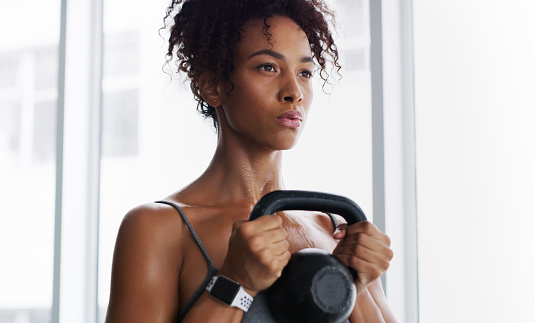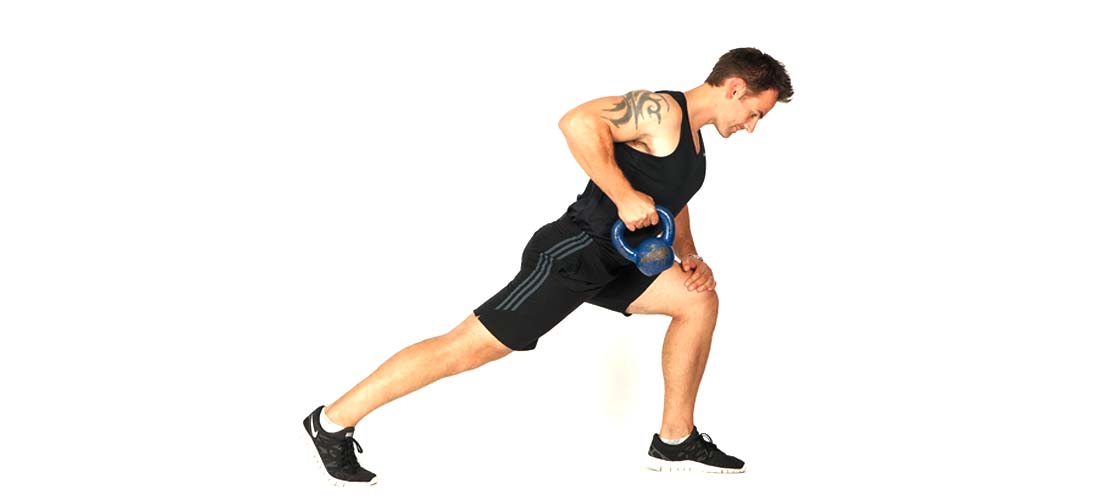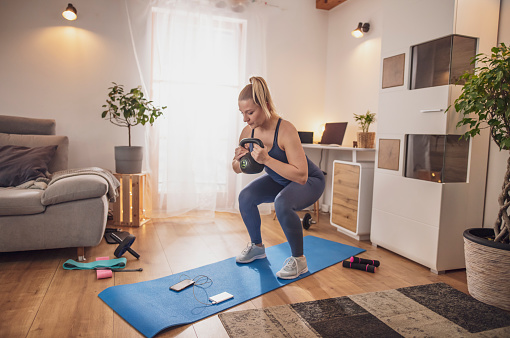The kettlebell is an incredibly useful piece of fitness equipment to have at home. Kettlebells provide amazing fitness advantages over dumbbells – with unequal weight distribution for swinging, pressing, or pulling.
Moreover, when it comes to grip and core stability, kettlebells carry additional challenges. It’s a smart idea to stock your home with a decent collection of kettlebells for when you’re stuck indoors.
Given that many of us spend our time indoors helping to flatten the COVID-19 curve, here’s how to do a kettlebell workout to burn fat, build muscle, and enhance fitness inside the walls of your home.

Kettlebell Home Workout Routines
One huge benefit kettlebells have over dumbbells is that you don’t need a wide variety of weight scales to get them into a workout.
One 16 kilo weight if you’re a man, or 8 kilos if you’re a woman, will get it done for most people. Corresponding exercises require only one kettlebell.
Workout at home now with these routines to build strength and burn fat, and improve the necessary endurance and agility to progress later into more advanced exercises.

Kettlebell Goblet Squat
Reps: 10
Hold the kettlebell by its horns and move your shoulder blades together and downward so that your chest is free (think of “proud chest”). Tuck your elbows, so that your forearms are upright.
Stand with feet a little wider than hip-width apart, with feet facing out slightly. Breathe deeply into your belly and curl your feet to the ground.
Think of screwing them down with squatting but not moving them, maintaining the torso vertically. Do it as low as you can, without tucking your tailbone under your butt.

One Arm Bent Over Kettlebell Row
Reps: 8 (each side)
Position the kettlebell on the floor, and with your right foot in front, take a balanced posture. It should be planting your foot just outside the weight.
Dig the ball of your left foot into the floor behind you and bend your hips, so that your torso is inclined to the floor about 45 degrees. Place your right elbow for support on your right thigh, and extend your left hand to reach for the kettlebell.
Maintaining your shoulders square, finish all your reps on one side and repeat the process on the other side.

Kettlebell One-Arm Press
Reps: 5 (each side)
Stand upright as you hold the kettlebell in one hand at shoulder level. As if you were preparing for someone to push you, root your feet into the floor.
Breathe deeply into your belly and hold your abs and glutes. Pull down your ribs, and think of “proud chest.”
With a vertical forearm, press the weight overhead. Remember that your chin should be pulled back so that weight will not have trouble clearing it.
Bring it back down into position to lower the kettlebell – as if you’re doing a pull-up. Complete all reps on one side, and repeat on the other.

Kettlebell Chest Supported Hinge
Reps: 15
Stand with feet between hip and shoulder-width apart and hold the kettlebell with its horns and bring the bell’s bottom toward your lower sternum.
Bring your shoulder blades together and down (“proud chest”) and set your eyes about 15 feet in front of you at a spot on the floor.
Take a few deep breaths and get your feet planted. Then bend your hips back and imagine you touching your butt to the wall behind you.
With your tailbone tilted slightly up, keep a long spine. Extend your hips and contract your glutes when you feel a stretch in your hamstrings, tucking your tailbone under when you lock out.
Final Words
Remember that, unlike what you see in most kettlebell exercises, the above have little to do with the Turkish getup and full swing, despite those two being the most common kettlebell exercises.
Instead, these have been adjusted to be more user-friendly, but still highly challenging versions that will allow anyone with any level of experience to train safely and in optimal form.
Table of Contents

